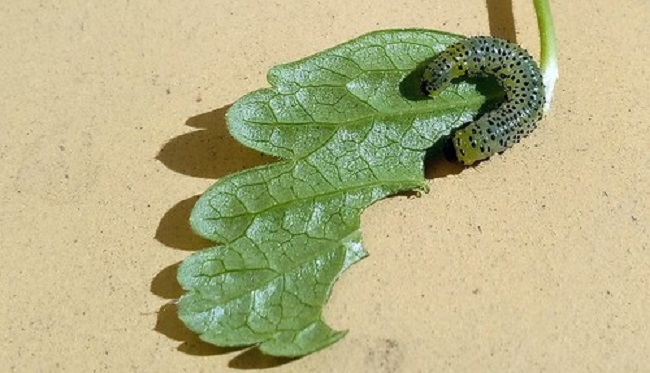 Gooseberry caterpillars gnaw all the leaves, if not destroyed. A few individuals will not eat the entire green mass, but more than ten larvae will bring noticeable damage to the plant. In addition to leaves, caterpillars can nibble and fruit.
Gooseberry caterpillars gnaw all the leaves, if not destroyed. A few individuals will not eat the entire green mass, but more than ten larvae will bring noticeable damage to the plant. In addition to leaves, caterpillars can nibble and fruit.
Pest control should be immediate. Timely treatment with chemical or folk remedies will save gooseberries from the inevitable loss of foliage and fruits.
Content
Varieties of Caterpillars Affecting Gooseberries
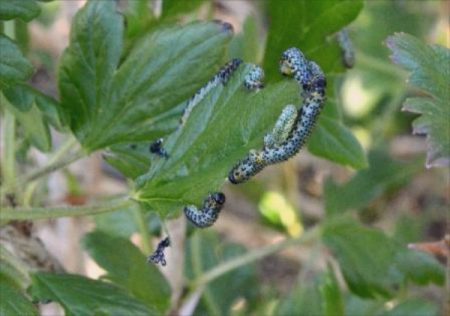 Varieties of caterpillars eating the fruits and leaves of plants, a large number. The insects that infect gooseberries include:
Varieties of caterpillars eating the fruits and leaves of plants, a large number. The insects that infect gooseberries include:
Gooseberry aphid (shoot)
Shoot aphid eats juice from leaves, gooseberry shoots, which leads to their complete drying out. The body of the pest reaches 1-2 centimeters, its shape is round. The chitinous cover is painted in light green. The defeat of aphids begins in early spring, as soon as the buds begin to bloom. The first sign is twisted leaves of shoots. The time of maximum spread and defeat falls on May and June.
Gooseberry moth
Ognevka represents a night butterfly. One individual can lay up to two hundred eggs. Outwardly, it looks like an ordinary butterfly, painted in brown-gray. The head is covered with scales, the shape is conical. The insect hibernates in a pupal state. Caterpillars reach 14 millimeters in length. The main color is gray-green, but black spots are located on the sides, the head is black. Only the caterpillar does harm. She eats leaves, and also gnaws the core of gooseberry berries.
Pests are scared away by the smell of wormwood, tansy, and tomatoes. Therefore, it is recommended to plant these plants next to gooseberries.
Yellow gooseberry sawfly
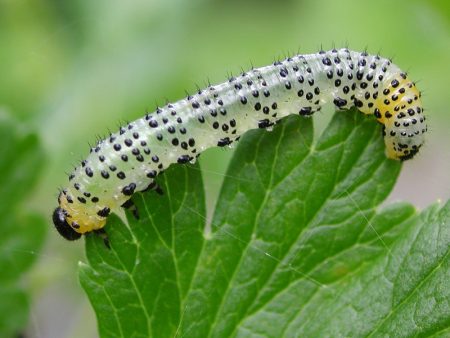 The yellow sawfly is a caterpillar that feeds on gooseberry and currant leaves. The body length reaches 7-8 millimeters. The insect hibernates in a cocoon. First, the pests begin to make holes in all the leaves, and then completely eat them. It was recorded that a colony of caterpillars can destroy all the leaves on a gooseberry bush within two weeks. Fruits can affect insects. The most dangerous for gooseberries is the second and third generation of pests. The first, in turn, affects currants.
The yellow sawfly is a caterpillar that feeds on gooseberry and currant leaves. The body length reaches 7-8 millimeters. The insect hibernates in a cocoon. First, the pests begin to make holes in all the leaves, and then completely eat them. It was recorded that a colony of caterpillars can destroy all the leaves on a gooseberry bush within two weeks. Fruits can affect insects. The most dangerous for gooseberries is the second and third generation of pests. The first, in turn, affects currants.
Kidney leaflet
In late spring and early summer, twisted leaves covered with a cobweb appear on the leaves of most garden plants, including gooseberries. This is a sign of kidney leaf damage. Caterpillars of the first generation are covered with small hairs, the body length does not exceed two centimeters. One individual lays 100-150 eggs. Larvae gnaw and twist leaves.
Gooseberry gooseberry
Caterpillars, gooseberry butterfly butterflies, feed on the kidneys and leaves of gooseberries and currants. The larva grows 30-40 millimeters in length. One female lays 200-300 eggs. Bushes are hit in the spring, as soon as the air temperature reaches + 18-20 ° C.
Chemical treatment of gooseberries
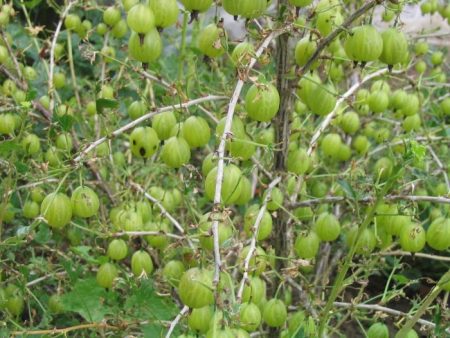 In early spring, when you noticed a pest on the gooseberry, chemicals can be used to treat the bushes. Until the berries fully ripen, all toxic substances will evaporate, and the fruits can be eaten. For processing, use drugs:
In early spring, when you noticed a pest on the gooseberry, chemicals can be used to treat the bushes. Until the berries fully ripen, all toxic substances will evaporate, and the fruits can be eaten. For processing, use drugs:
- Inta-Vir is an enteric-contact insecticide that begins to act on insects 2-3 days after the treatment of plants. Preparation of working solution: dissolve one tablet in a bucket of warm water. Spray the entire plant completely;
- Sevin is an insecticide for controlling caterpillars in early spring. Gooseberries need to be sprayed before buds open. Preparation of the solution: pour out the contents of one sachet (10 grams) in ten liters of water, stir until completely combined.
Do not use chemicals after flowering. During spring, plants are treated no more than three times.
Folk remedies for gooseberry caterpillar control
Since it is not recommended to use chemicals after flowering, folk remedies are used. You can destroy the caterpillars during the fruiting period:
- a solution based on nine percent table vinegar, which acts as a good fungicide and insecticide. The mixture is prepared on the basis of a bucket of water and 50 ml of vinegar. Combine the ingredients, pour into a sprayer and treat gooseberry bushes. Spray in cloudy weather or in the evening;
- mustard infusion. Take a glass of dry mustard powder, dissolve in a bucket of water. Leave the resulting mixture for several days to insist. Then dilute the infusion with clean water (one part of the solution to five parts of water). Before spraying, add liquid soap to the finished solution to better fix the mixture on the plant;
- solution based on ammonia. Preparation: take a bucket of water and dissolve 10 ml of ammonia in it. You can apply throughout the growing season of the plant;
Before spraying gooseberries, wear a respirator and glasses so that volatiles from the solution do not enter the respiratory tract and eyes.
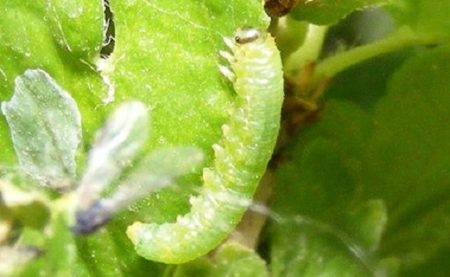
- wormwood based infusion. Take dry or fresh wormwood (5 kg), chop it, fill it with a bucket of water. Insist for a day. Then put on fire and boil for 30 minutes. Let the infusion cool. Then strain it, dilute with clean water one to one;
- tobacco dust infusion. Preparation: dissolve in a bucket of warm water (50 ° C) half a kilogram of tobacco dust, leave for two days. Then strain the mixture through cheesecloth, put on a fire, cook for two hours. Once the infusion has completely cooled, dilute it one to one with water. Treat gooseberries right away. Store the infusion for a long time;
- burdock-based infusion. Collect burdock leaves, chop them, place in a bucket (fill to half), fill with water, leave to insist for 2 days. Strain the resulting mixture, add 40 grams of liquid soap, stir. You can replace burdock with tops of potatoes or tomatoes, milkweed, dope.
Gooseberry Track Prevention
Preventive measures will help reduce the likelihood of caterpillars appearing on gooseberries:
- Rake and burn fallen leaves under gooseberries. This measure is necessary due to the fact that pupae of pests under dry leaves hibernate. And removing the leaves, you destroy them.
- Dig the soil under the bushes and loosen it. Some insects hide in the thickness of the earth.
- In early spring, pour boiling water over the gooseberries and pericardial space. Larvae that were on shoots and in the thickness of the soil will die.
- Perform preventive spraying with Bordeaux liquid, which will protect gooseberries not only from caterpillars, but also from the development of fungal diseases.
Gardeners tips
Even if there are no obvious traces of pests on the gooseberry, it is better to play it safe and spray the plants with infusion based on onion husks and tobacco.Take two hundred grams of onion husks and the same amount of fresh chopped onions and tobacco, pour a bucket of water. Put on fire, cook the mixture for two hours. Then cool the resulting slurry, strain, add another bucket of water, add 30 grams of liquid soap. Well, actually spray gooseberries. The solution does not harm either the plant or the beneficial insects that come into contact with it.
Folk and chemical products will save gooseberries from the invasion of caterpillars, only if you notice their appearance in time and carry out a number of treatments. And it is best to take preventive measures and not be afraid that pests will gnaw all the leaves and spoil the fruits.

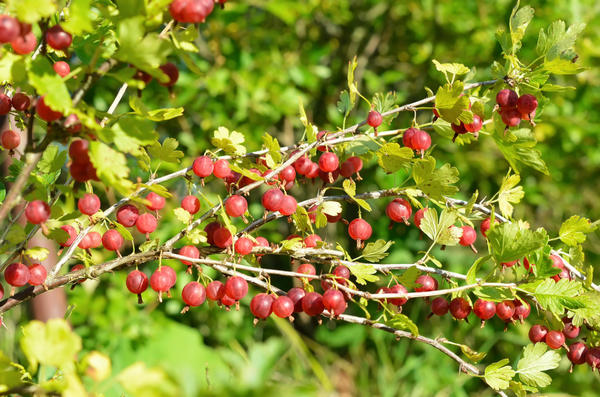
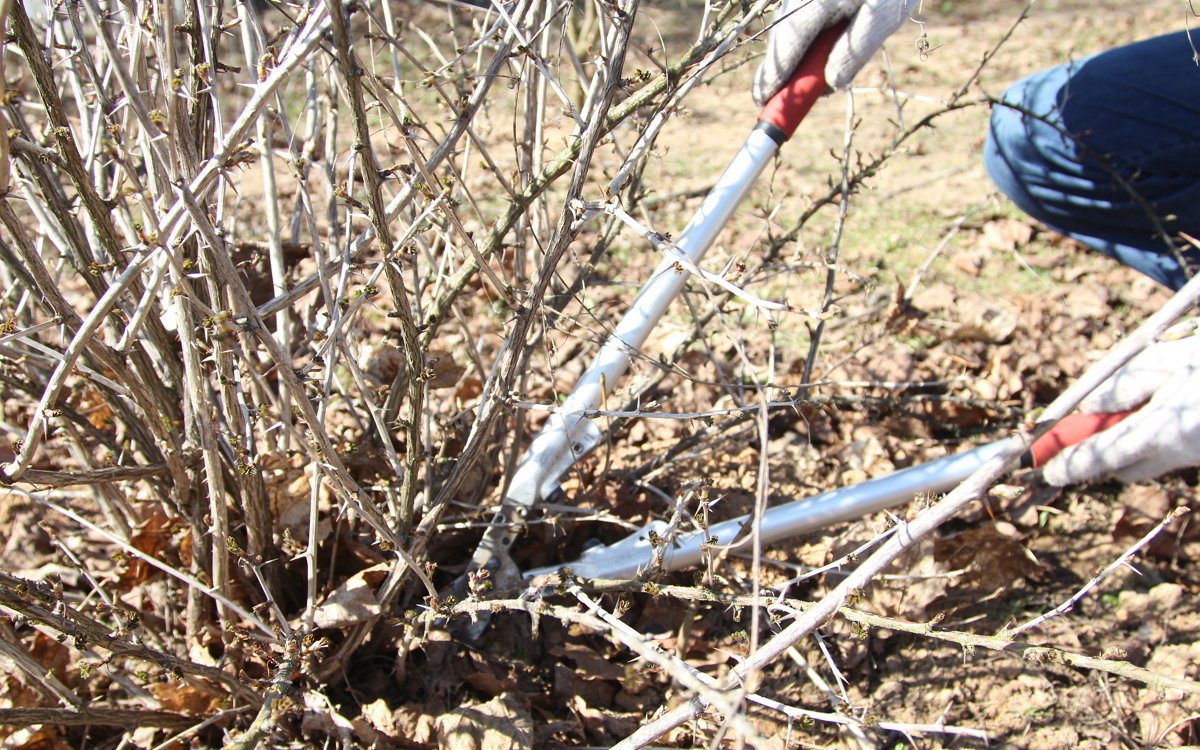
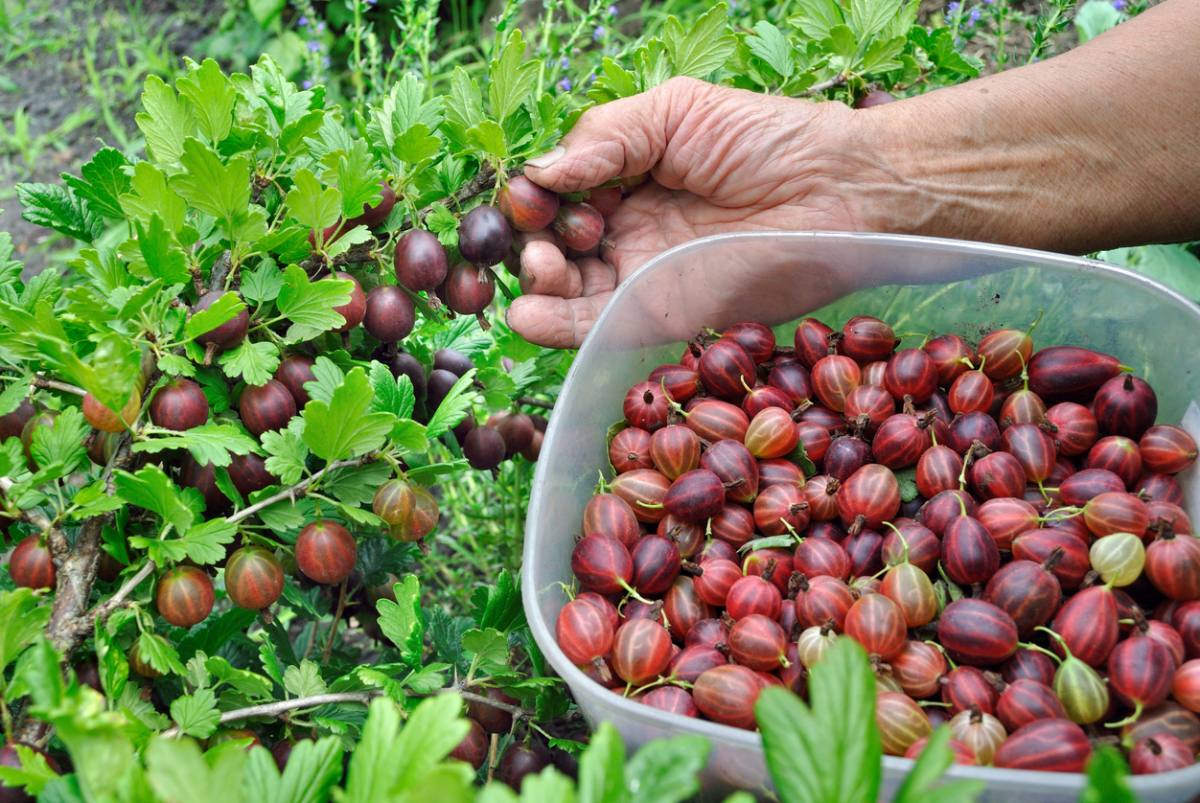
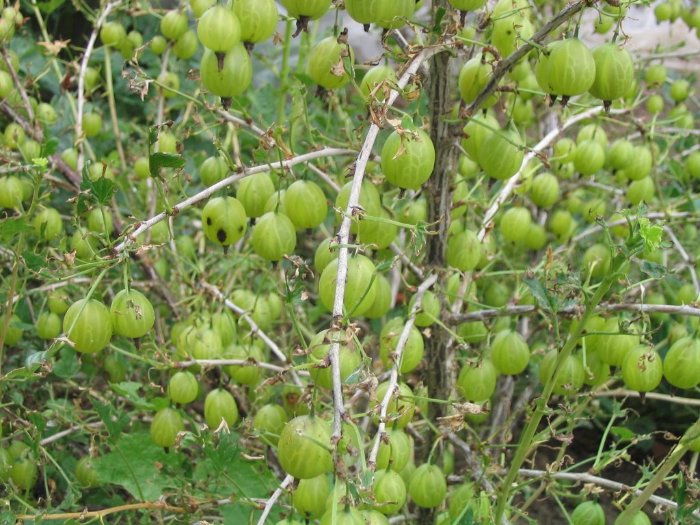 What if gooseberries have eaten all the leaves? Simple tools come to the rescue
What if gooseberries have eaten all the leaves? Simple tools come to the rescue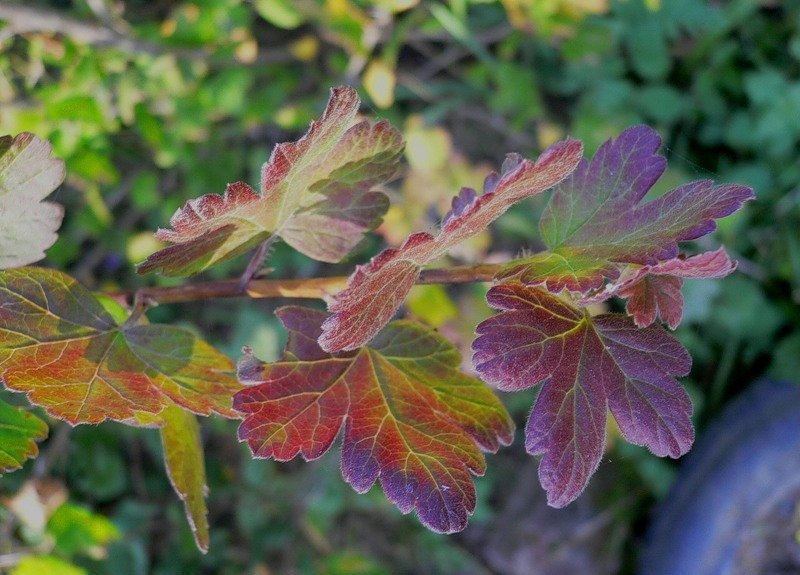 What does the red border on gooseberry leaves mean and what needs to be done
What does the red border on gooseberry leaves mean and what needs to be done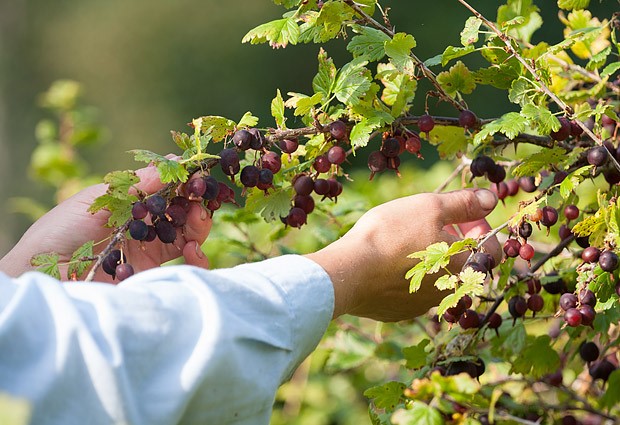 That's the end of summer, it's time to feed gooseberries after harvest
That's the end of summer, it's time to feed gooseberries after harvest